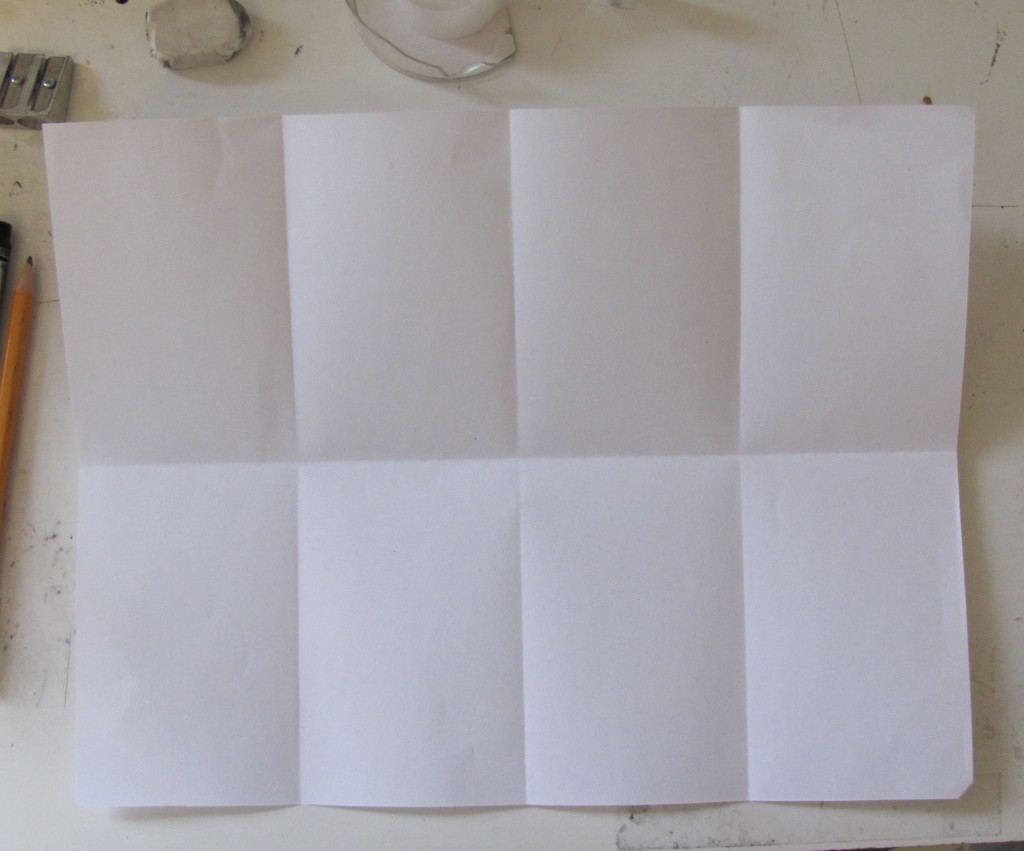Here's something I tried in two different classes with completely different grammar points. All you need is a blank sheet of paper for each student and a marker to write on the board.
The first group of students I did this with was a group of teenagers. We were studying conditional sentences, first conditional to be exact. I projected eight phrases on the board which they would have to complete, for example: If it's sunny on Saturday, ...
I then asked them to fold their sheets 3 times right in the middle so that when they opened the sheet there would be eight squares made from the creases created by folding the paper.
They were then instructed to complete the sentences, one per square, but not to copy the first part of the sentence only write the part they had thought of. They were also told not to write the continuation of the phrases in order but in random squares. Maybe writing the first one in the last square, the second one in a middle square and so on.
When they were done, I collected everybody's paper, shuffled them and handed them out again. Now each student had someone else's paper, so they had to try to connect what the person had written to what was on the board by writing the first part of the sentence in the correct square.
At the end, they had to go and find the owner of the sheet they had. When each student got their own paper back, they had to see if the person had guessed correctly and check if the sentences were grammatically correct.
My second class was a group of adults. I used the same exact activity but with in order to, in order not to or only to. For example: People go to weddings in order to...
In both groups the activity worked really well. The students practiced grammar and enjoyed themselves.


The first group of students I did this with was a group of teenagers. We were studying conditional sentences, first conditional to be exact. I projected eight phrases on the board which they would have to complete, for example: If it's sunny on Saturday, ...
I then asked them to fold their sheets 3 times right in the middle so that when they opened the sheet there would be eight squares made from the creases created by folding the paper.
They were then instructed to complete the sentences, one per square, but not to copy the first part of the sentence only write the part they had thought of. They were also told not to write the continuation of the phrases in order but in random squares. Maybe writing the first one in the last square, the second one in a middle square and so on.
When they were done, I collected everybody's paper, shuffled them and handed them out again. Now each student had someone else's paper, so they had to try to connect what the person had written to what was on the board by writing the first part of the sentence in the correct square.
At the end, they had to go and find the owner of the sheet they had. When each student got their own paper back, they had to see if the person had guessed correctly and check if the sentences were grammatically correct.
My second class was a group of adults. I used the same exact activity but with in order to, in order not to or only to. For example: People go to weddings in order to...
In both groups the activity worked really well. The students practiced grammar and enjoyed themselves.

Comments
Post a Comment